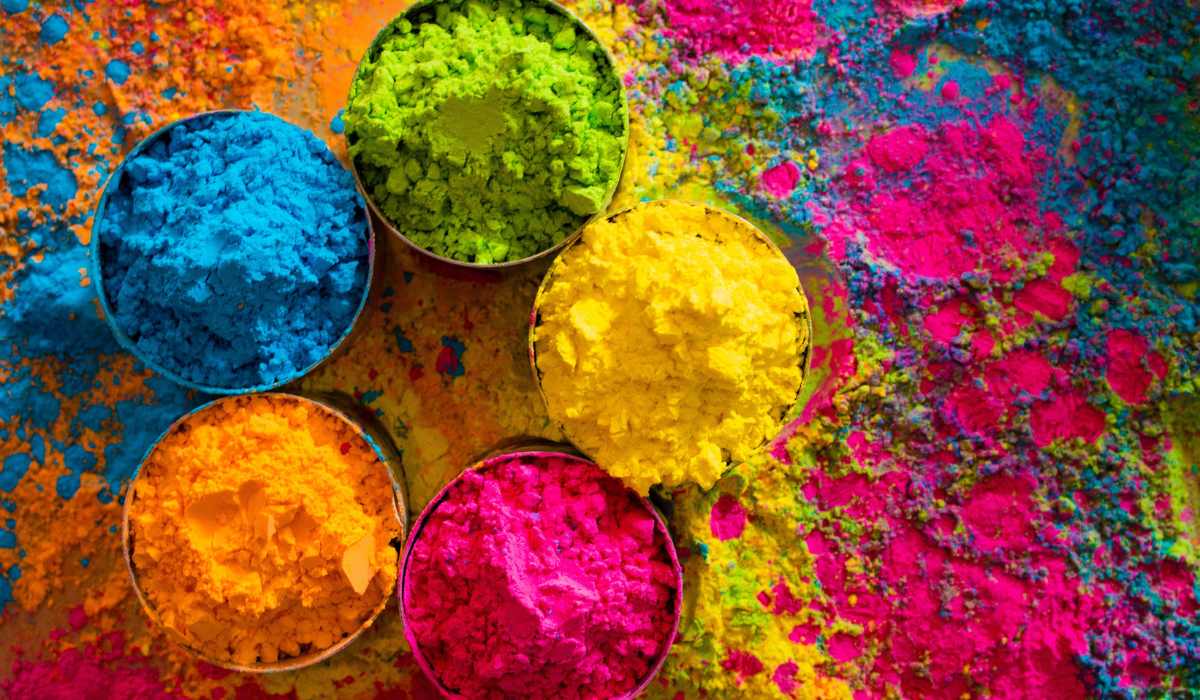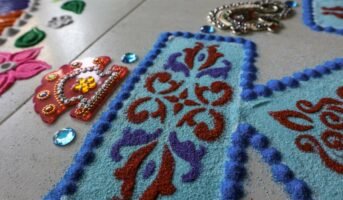One of India’s biggest festivals, Holi embodies the vivacity of spring with its vibrant colours and other festive elements. This day is observed annually in early March during the Hindu month of Phalguna. Holi is a traditional Hindu festival that is observed almost everywhere in the world. Holi, which has its roots in Hindu mythology, also commemorates the victory of good over evil, a symbolism that corresponds with the end of winter and the start of spring. It has a rich historical context and cultural relevance in Hindu culture. Read on to learn about the significance of different colours of Holi.
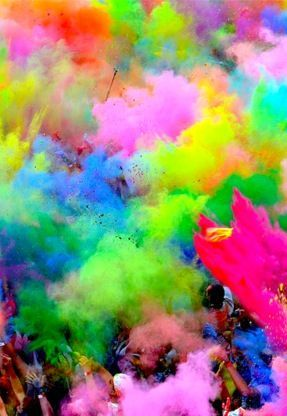
Source: Pinterest
See also: How to make Holi colours at home?
Origin of Holi
Since ancient times, the festival has been celebrated every year all through the country. The event was first an agricultural celebration of the coming of spring. It stands for letting go of winter’s melancholy and embracing spring’s vitality. The festival’s lore features an evil king by the name of Hiranyakashipu. He prohibited his son from praying to lord Vishnu. His son Prahlad nevertheless continued to pray to the gods. Prahlad was punished by making him on a pyre with his aunt Holika, who was immune to fire, by Hiranyakashipu. When the fire started, Holika died but Prahlad was unharmed.
People spread colour on each other the morning after, also known as Rangwali Holi, and share delicious gujiyas while celebrating love. Water cannons and water balloons are also used for an enjoyable celebration.
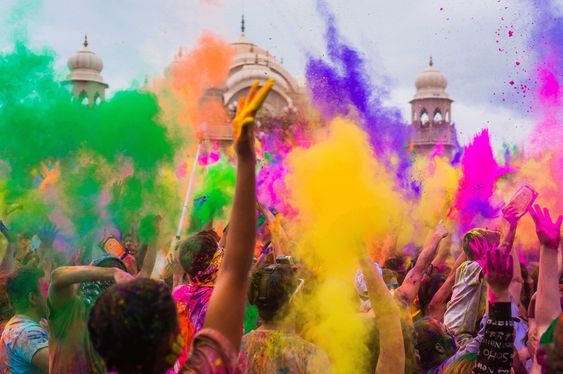
Source: Pinterest
Holi celebration in India
People frequently gather wood and flammable materials prior to the festival to start bonfires in parks, community centres, and other public areas. Stuffing homes with food, beverages, and festive foods like mathri, malpuas, and gujiya among many others, is another aspect of preparation. The pyre is lit on the eve of Holi to represent the Holika Dahan. Along with singing and dancing, people congregate around the fire. The next day on Holi, people use a variety of colours. Historically, the best choice for this situation is to wear something natural and washable. Dhak, kumkum, turmeric, and neem are a few of the colours you can use. If you can’t get traditional colours, commercial pigments that are based on water, work just as well.
Colours of Holi: Significance of different colours
The variety of colours of Holi is what makes the celebration so amazing and fun. Of course, the most significant components of the Holi festival are the colours, which are the carriers of happiness and laughter. While there are a variety of colours available today that all can play with and celebrate, in the past, people would create their own natural colours at home with flowers and other organic materials. Here are the different colours of Holi and their significance.
Red
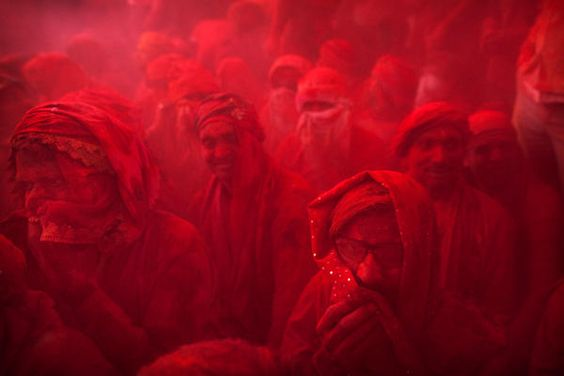
Source: Pinterest
One of the most frequently used colours is red. This colour is significant and has a wonderful, joyful meaning. It is used for many other occasions in addition to Holi. The colour represents fertility, marriage, and love. Hindus do this for the same reason that they place a red tika, apply red kumkum, and wear red-coloured clothing.
Yellow
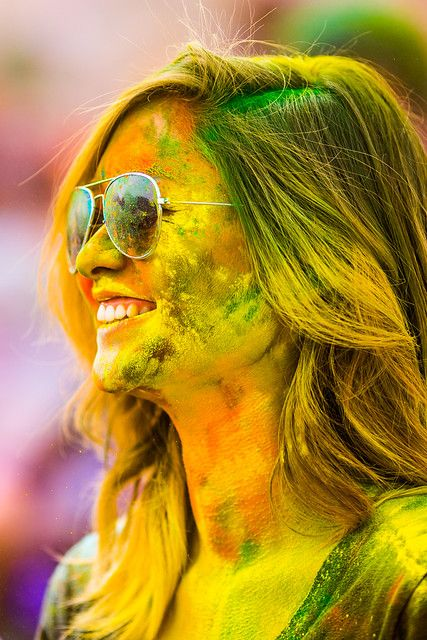
Source: Pinterest
Yellow is a bright colour that makes people happy. It is used very frequently during Holi. This colour was historically created using turmeric powder. It stands for contentment and wellness. It is even more popular because it is believed that Lord Vishnu prefers this colour. The colour is also associated with knowledge, education, joy, and peace.
Green
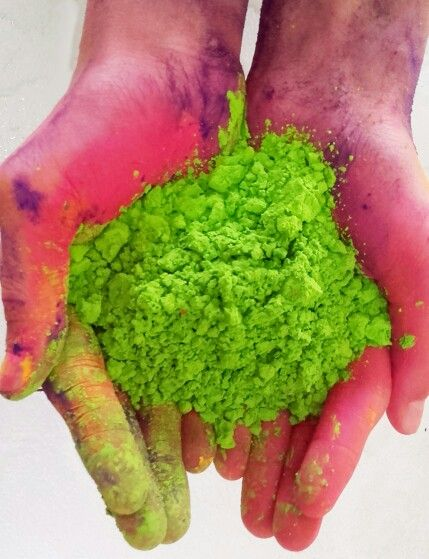
Source: Pinterest
Another natural colour that can be procured from spinach is green. During Holi, it is also seen warming people’s hearts, and many people genuinely adore this colour. The colour represents freshness, virility, harvest, and new beginnings. Since Lord Rama spent his entire life imprisoned in the forest, it is said that the colour green, which also symbolises nature and its beauty, helped him relax.
Orange
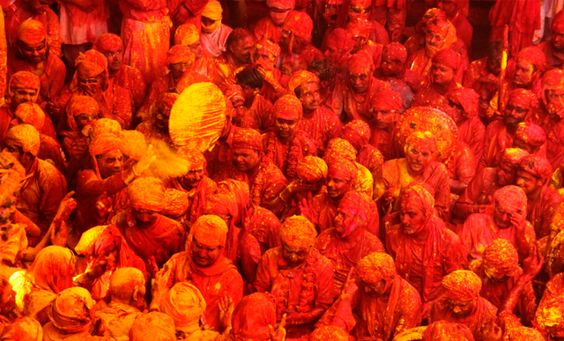
Source: Pinterest
Another popular colour of Holi is orange. It is also thought to be the colour of the sun and is associated with the dawn of a new day and the spread of light. This colour symbolises resilience and the need to move on from the past. This colour is also associated with fresh starts and forgiveness.
Pink

Source: Pinterest
This colour is the most popular. It represents kindness and positivity. It affirms compassion and empathy as some of the most crucial virtues. The pink hue, which is typically extracted naturally from beetroot, also conveys the idea of fun.
Purple
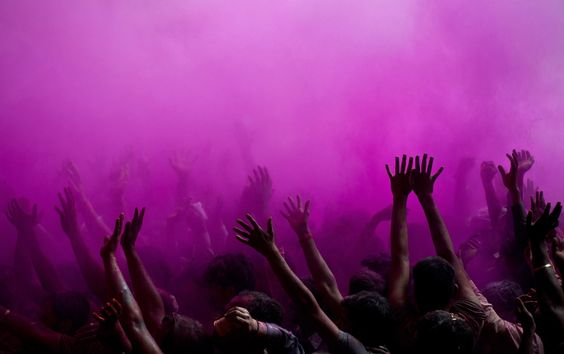
Source: Pinterest
Purple is a mysterious and magical colour. It is the colour that represents the expanse of fresh opportunities. It soothes and calms. It is also one of the most popular hues that can be produced at home using red cabbage.
FAQs
What Can be used to protect the skin on Holi?
You can safeguard your skin from colours by using coconut oil or almond oil. Apply these oils on your body and massage them into your skin the day before Holi. Your skin will be more hydrated as a result and less colour will be absorbed the following day.
What is the name of the coloured powder?
Gulal is the original name for the coloured powder used in Hindu religious ceremonies, celebrations and Holi.
| Got any questions or point of view on our article? We would love to hear from you. Write to our Editor-in-Chief Jhumur Ghosh at [email protected] |
Saswat Kumar, a real estate writer, keeps up with the latest trends in residential real estate. He simplifies complex real estate jargon, making it accessible to all. Saswat’s data-driven analysis empowers buyers and investors to make informed choices in the housing market.
